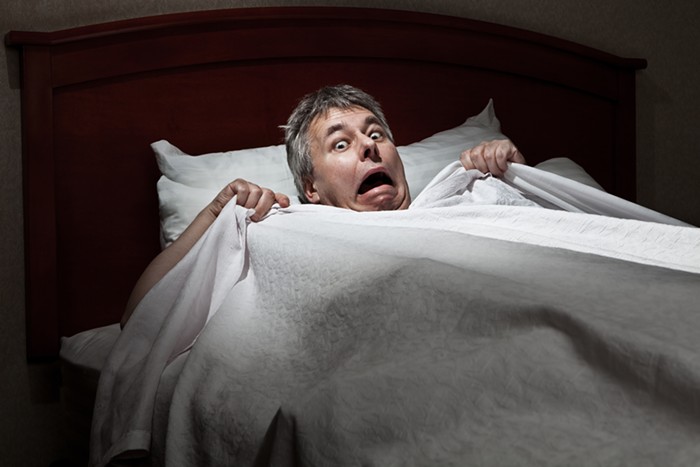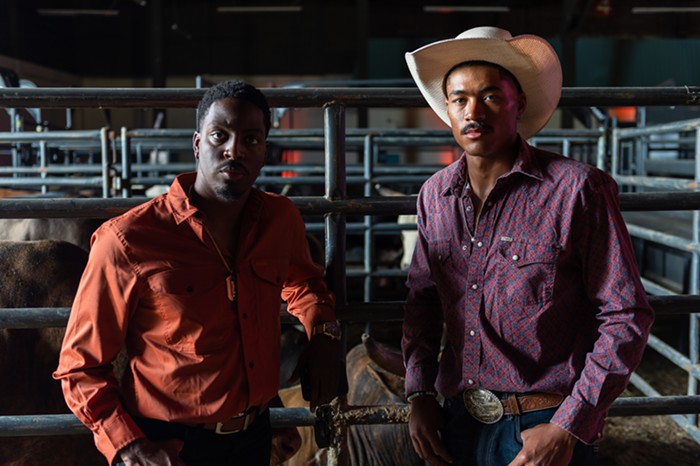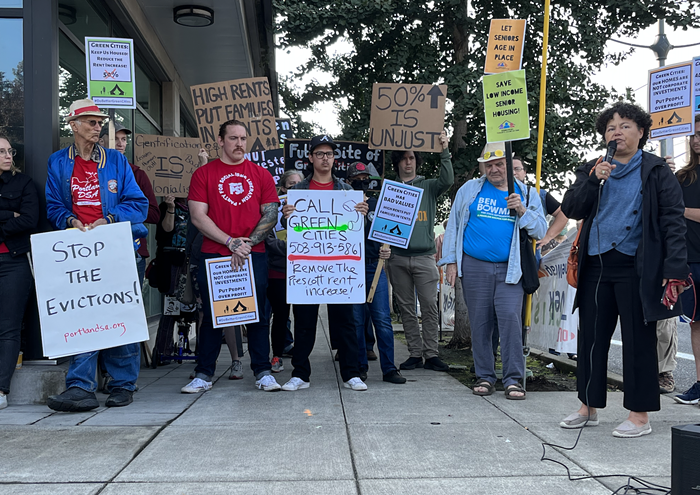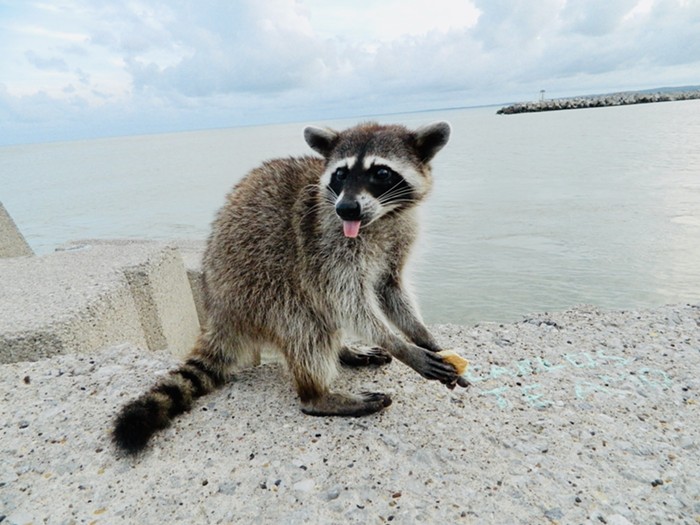at the Blue Sky Gallery, 1231 NW Hoyt, through January 31
I f they were handing out awards for Photographer of the Northwest Scene, it would be hard to pass up Eugene artist Craig Hickman. One of the founding members of the Blue Sky gallery, Hickman has been a compulsive observer and recorder of quirky, plasticky small town life in the Northwest. His new show at Blue Sky, a homecoming of sorts, offers up nearly forty new digital color prints of hand painted signs, vinyl tents, abandoned pickups, and Putt-Putt oddities. A computer programmer and professor of digital arts, Hickman is a sort of Macintosh savant, and soups his images up with PhotoShop by punching up colors, tweaking saturation levels and contrast, and removing distracting details like power lines and litter to create a subtle photographic hyper-reality.
Hickman's unpopulated images overflow with the evidence and residue of human existence. Signs of all sorts are his signature subjects. His favorites are the ones in which the actual wording and advertisement has been removed, so all that remains is the freestanding sign holder--an empty semiotic word bubble. Other classic "Hickmans" include brightly painted corrugated metal buildings, agricultural silos and Quonset huts, and other various forms of forgotten vernacular architecture.
Subject matter alone does not a "Hickman" make. The artist's consistency of vision is remarkable. His preferred angle of viewing is 90 degrees head-on, making everything rigid and typological, like trading cards or real estate photographs. This detached point of view began in earnest with Walker Evans, and has become the dominant mode of photographic seeing over the past 20 years or so (see Andreas Gursky, Judy Fiskin, or Jeff Brouws for prime illustrations of this symmetrical, flat vision). It's all a nod to vernacular photography that is designed solely to give information--Chinese food menus, prefab building catalogs, and the like--but the style has become a cop-out that photographers use instead of developing a new and original way of seeing the world around them.
Hickman only shoots on overcast days, and then removes any trace of color from the sky with his computer, making the cloudy days uniformly gray. After looking at 15 or 20 of Hickman's photographs, his vision becomes infectious. Unfortunately, at twice that amount, it becomes redundant and tiresome. The repetition of the subject matter, the insistence on the cold "just the facts, ma'am" point of view, and the tonal uniformity that digital manipulation allows makes much of Hickman's work seem less like a process of discovery than an exercise in style-sculpting. It offers evidence that style can indeed be the enemy; we get the feeling that at this point in his career, the artist could make these photographs in his sleep. CHAS BOWIE












